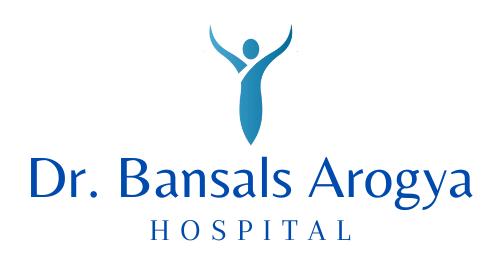Fractures in Children
Medical Laboratory And Specialists Services
A Fracture is either a partial or complete break in a bone. Almost 15 % of all injuries in children are fractures. Fractures in children are different as compared to fractures in adults and cannot be treated the same way.
Fractures in children can happen even with a trivial fall or a twist.
How to recognise if your child has a fracture?
Children generally have pain, swelling and bruising, or deformity around the fractured area. However the most common symptom is inability to use the affected part. The child is unable to use the hand, or leg if there is an underlying fractured bone. There may be restriction in movement and the child will be unable to do everything that the normal part does.
Tests to see a fracture
We clinically examine the child, and do x-rays. X-rays are the first step to recognising a fracture. Sometimes we do comparative x-rays of the opposite side to make sure of the injury. A CT scan or MRI may help in diagnosis. Sometimes fractures show up better in x-rays when the fracture starts healing, and we repeat x-rays in a week or less.
Types of Fractures in Children
Children have different bones as compared to adults. Children’s bones are soft, more
elastic and have growth plates (areas from where bones grow) at their ends.
1. Torus / buckle fractures - stable fractures
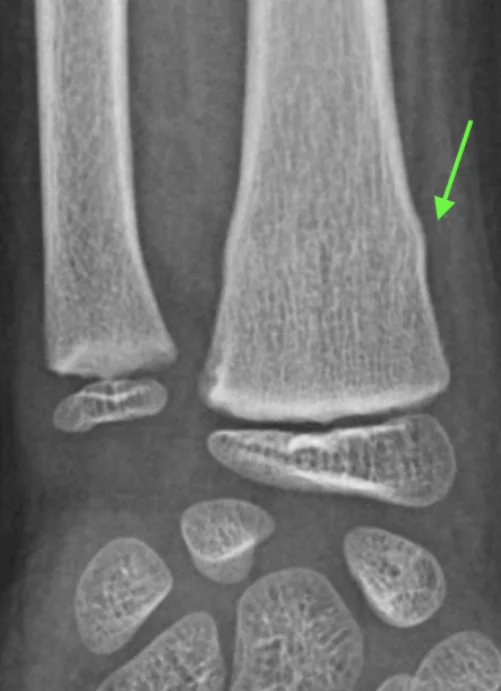
(Torus / Buckle Fracture around the Wrist Joint)
2. Greenstick fractures - the bone is cracked on one side and bent on the other side.
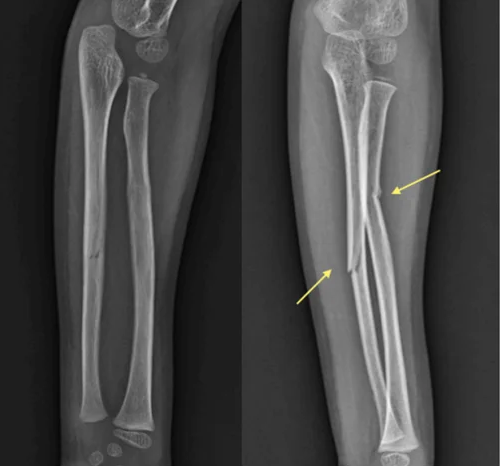
(Greenstick Fracture)
3. Plastic deformation - Complete bending/bowing of bone without fracture
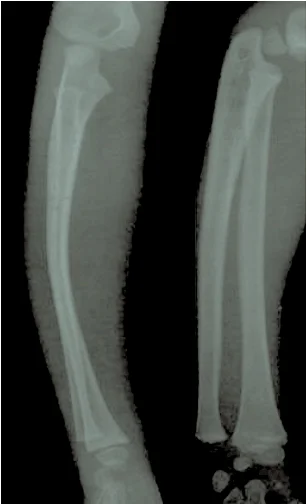
(Bowing of Both Bones of Forearm)
4. Complete displaced fractures
5. Growth plate fractures - fractures around the growth plate.
Treatment of Fractures in children
The aim of treatment is to get acceptable alignment. We do not aim for a perfect reduction. Children’s fractures have greater healing and remodelling potential. The aim is to bring the bones into alignment, so that fractures can unite in an acceptable position, and heal normally.
Splinting –
The application of posterior slab / half plaster – to help reduce swelling and give pain relief.
Casting –
The application of a full plaster to help hold the bones in place.
Closed Reduction –
A procedure when the bones and fracture is brought into alignment without cutting the skin and exposing fracture site.
Open Reduction –
When the skin is cut, the fracture is exposed and fracture is then brought into alignment.
Fixation –
It is when wires, nails, plates or screws are used to hold the fracture in place.
Remodelling
Remodelling happens only in children. It starts after the fracture has healed and can last months to years. It allows the bone to look and function the same as the other side. The younger the child - the better is the remodelling.
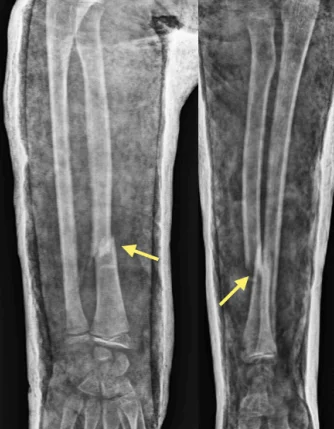
Fracture
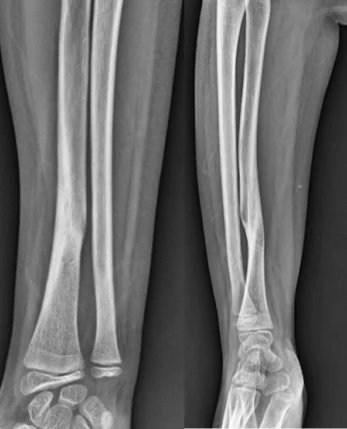
5 months follow up
